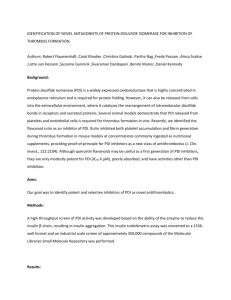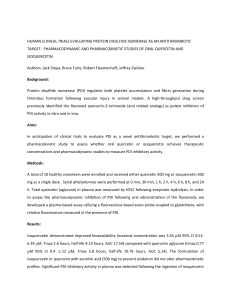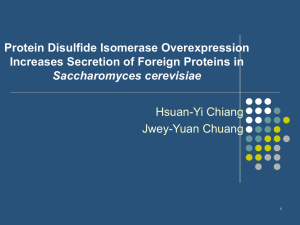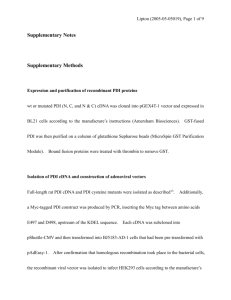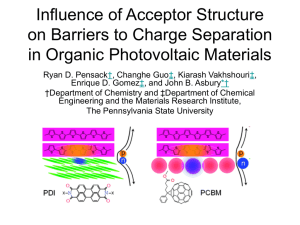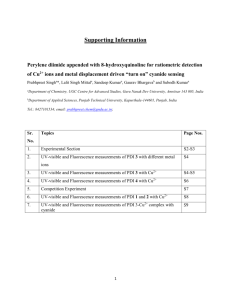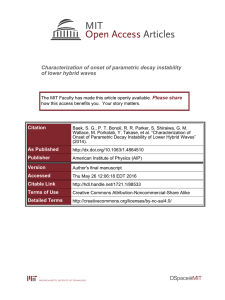INDUCED BACKSCATTERING PARAMETRIC DECAY INSTABILITY
advertisement
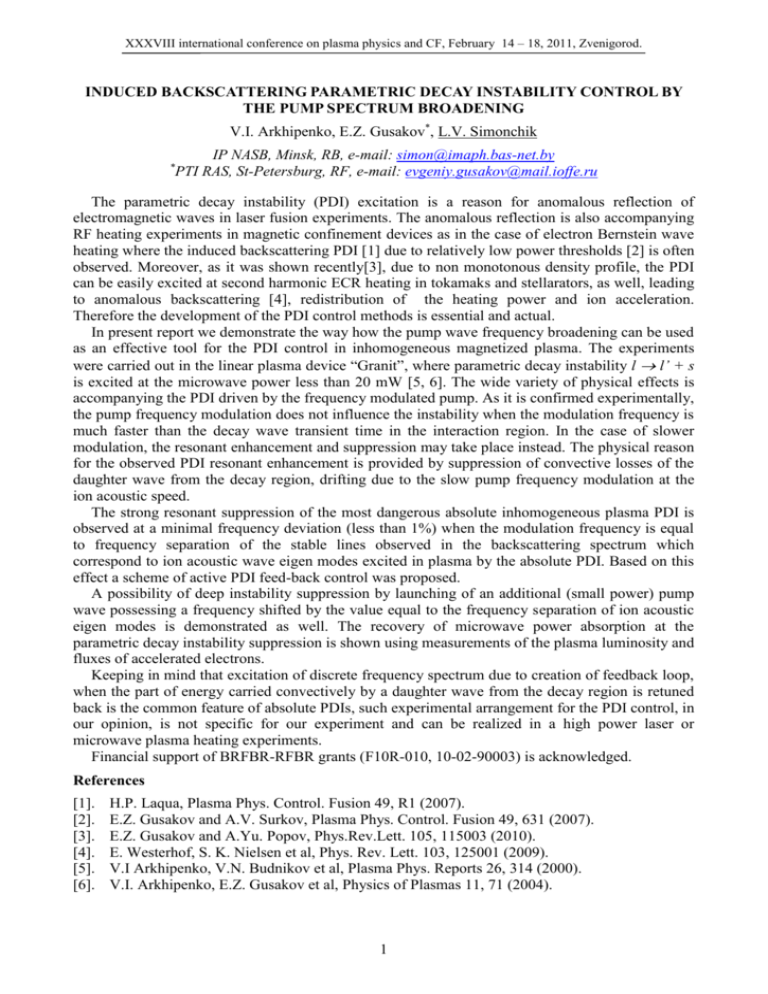
XXXVIII international conference on plasma physics and CF, February 14 – 18, 2011, Zvenigorod. INDUCED BACKSCATTERING PARAMETRIC DECAY INSTABILITY СONTROL BY THE PUMP SPECTRUM BROADENING V.I. Arkhipenko, Е.Z. Gusakov*, L.V. Simonchik * IP NASB, Minsk, RB, e-mail: simon@imaph.bas-net.by PTI RAS, St-Petersburg, RF, e-mail: evgeniy.gusakov@mail.ioffe.ru The parametric decay instability (PDI) excitation is a reason for anomalous reflection of electromagnetic waves in laser fusion experiments. The anomalous reflection is also accompanying RF heating experiments in magnetic confinement devices as in the case of electron Bernstein wave heating where the induced backscattering PDI [1] due to relatively low power thresholds [2] is often observed. Moreover, as it was shown recently[3], due to non monotonous density profile, the PDI can be easily excited at second harmonic ECR heating in tokamaks and stellarators, as well, leading to anomalous backscattering [4], redistribution of the heating power and ion acceleration. Therefore the development of the PDI control methods is essential and actual. In present report we demonstrate the way how the pump wave frequency broadening can be used as an effective tool for the PDI control in inhomogeneous magnetized plasma. The experiments were carried out in the linear plasma device “Granit”, where parametric decay instability l l’ + s is excited at the microwave power less than 20 mW [5, 6]. The wide variety of physical effects is accompanying the PDI driven by the frequency modulated pump. As it is confirmed experimentally, the pump frequency modulation does not influence the instability when the modulation frequency is much faster than the decay wave transient time in the interaction region. In the case of slower modulation, the resonant enhancement and suppression may take place instead. The physical reason for the observed PDI resonant enhancement is provided by suppression of convective losses of the daughter wave from the decay region, drifting due to the slow pump frequency modulation at the ion acoustic speed. The strong resonant suppression of the most dangerous absolute inhomogeneous plasma PDI is observed at a minimal frequency deviation (less than 1%) when the modulation frequency is equal to frequency separation of the stable lines observed in the backscattering spectrum which correspond to ion acoustic wave eigen modes excited in plasma by the absolute PDI. Based on this effect a scheme of active PDI feed-back control was proposed. A possibility of deep instability suppression by launching of an additional (small power) pump wave possessing a frequency shifted by the value equal to the frequency separation of ion acoustic eigen modes is demonstrated as well. The recovery of microwave power absorption at the parametric decay instability suppression is shown using measurements of the plasma luminosity and fluxes of accelerated electrons. Keeping in mind that excitation of discrete frequency spectrum due to creation of feedback loop, when the part of energy carried convectively by a daughter wave from the decay region is retuned back is the common feature of absolute PDIs, such experimental arrangement for the PDI control, in our opinion, is not specific for our experiment and can be realized in a high power laser or microwave plasma heating experiments. Financial support of BRFBR-RFBR grants (F10R-010, 10-02-90003) is acknowledged. References [1]. [2]. [3]. [4]. [5]. [6]. H.P. Laqua, Plasma Phys. Control. Fusion 49, R1 (2007). E.Z. Gusakov and A.V. Surkov, Plasma Phys. Control. Fusion 49, 631 (2007). E.Z. Gusakov and A.Yu. Popov, Phys.Rev.Lett. 105, 115003 (2010). E. Westerhof, S. K. Nielsen et al, Phys. Rev. Lett. 103, 125001 (2009). V.I Arkhipenko, V.N. Budnikov et al, Plasma Phys. Reports 26, 314 (2000). V.I. Arkhipenko, E.Z. Gusakov et al, Physics of Plasmas 11, 71 (2004). 1

